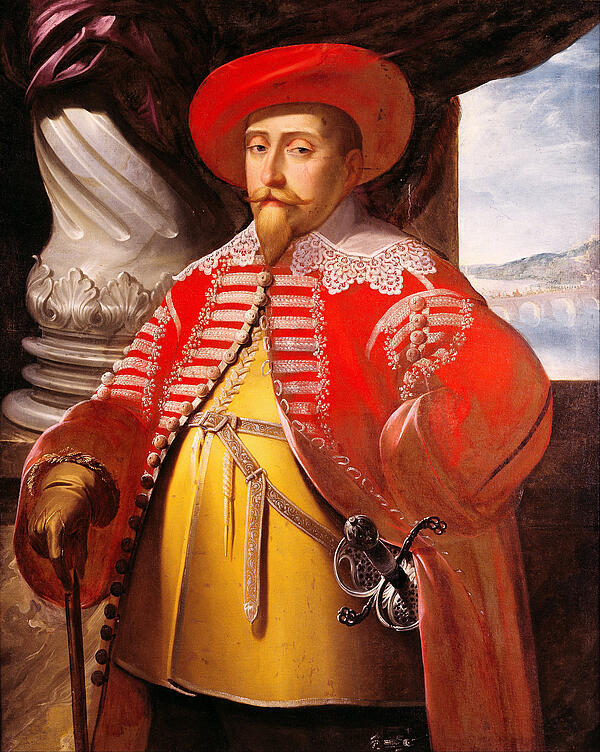Gustavus Adolphus - Foreign Policy
Gustavus Adolphus’ foreign policy is most often linked to the Thirty Years War (1618-1648). He died during an important battle of the Thirty Years War: the Battle of Lützen in 1632. However, Adolphus was also involved in the Kalmar War (1611-1613), the Ingrian War (1610-1617) and the Polish-Swedish Wars (1600-1629)

The Ingrian War: 1610-1617, Sweden vs. Russia
The Ingrian War was fought from 1610 and 1617 between Sweden and Russia. During the war, Sweden tried to make a Swedish Duke the Russian monarch.
Russia was at this point enduring its ‘Times of Troubles’. Sweden tried to take advantage of this weakness and block Russia’s westward expansion towards the Baltic She also wanted to stop any possible Polish attempt to gain the Russian crown. Gustavus could not accept a possible Polish occupation of Russia.
Sweden ended the war well. Russia and Sweden signed the Treaty of Stolbovo in 1617. Sweden gained the province of Kexholm, south-West Karelia and the province of Ingria, which included the fortress of Nöteborg, "the key to Finland". Russia also renounced its claims to Livonia and Estonia. This treaty meant that Russia had no access to the Baltic Sea.
The Kalmar War: 1611-1613, Sweden vs. Denmark-Norway
The Kalmar War was fought between 1611 and 1613 between Sweden and Denmark-Norway, who were led by Christian IV. Both sides wanted control of the northern Norwegian coast, which brought access to the Atlantic.
Sweden lost the important port of Kalmar in the summer of 1611. In May 1612, she also lost the fortress of Älvsborg. This meant that Sweden lost its access to the sea in the West.
Christian could not capitalise on these early successes and fully conquer Sweden itself. His aggressiveness won him enemies, including the Dutch and the Hanseatic League, who were worried that he would destabilise the area and thereby damage important trade relationships. They sided with Sweden and this encouraged Christian to sue for peace.
In January 1613, Sweden and Denmark signed the Treaty of Knared. Sweden had to recognize Danish sovereignty over Finmark. She also had to pay a large ransom for the return of Älvsborg (which she managed to pay four years later).
The Polish-Swedish War (1600-1629)
The Polish-Swedish Wars were fought intermittently. The war is therefore divided into four sections: 1600-1611, 1617-1618, 1621-1625 and 1626-1629.
SIgismund was the King of Poland. He was king of Sweden before he was deposed by Charles IX, Gustavus Adolphus’ father, in 1599.
The war took place for two main reasons.
- Sigismund’s claim that he was the rightful heir to the Swedish throne.
- Gustavus’ desire to gain ports on the Livonian and Prussian coasts so that he could lucrative custom dues.
Sweden managed to capture Riga in 1621 and Livonia in 1625. In 1626. Sweden captured three cities in Polish Prussia: Memel, Pillau and Elbing.
In 1629, the Treaty of Altmark was signed. This was sponsored by Cardinal Richelieu of France. Richelieu wanted to free Sweden from distractions so that she could focus all her attention on the Thirty Years War. The terms of the treaty decreed that Sweden would keep all the ports whose income was more than Sweden’s overall revenue.
Conclusion
In the sphere of foreign policy, Gustavus enjoyed overall success. At the time of his death in 1632, Sweden was the strongest and most dominant of the Baltic states. This is why the date of Gustavus’ ascension to the throne (1611) is usually seen as the start of ‘the Great Power Era’ in Swedish history. This lasted for more than one hundred years, until 1721, when Sweden lost territories at the end of the Great Northern War (1700-1721).
MLA Citation/Reference
"Gustavus Adolphus - Foreign Policy". HistoryLearning.com. 2024. Web.
